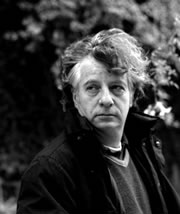Javier Mariscal
Valencia, 1950
Javier Mariscal was born in Valencia in 1950 to a family of eleven children. He studied philosophy, and moved afterwards to Barcelona in 1970 where he started studying graphic design in Elisava and afterwards developed his extremely versatile career. In those years, Mariscal and Nazario created the first underground comic in Spain, el Rrollo Enmascarado, that was confiscated by the government only two months after. Mariscal kept drawing and discovering his own abilities, and in 1977 presented his first exhibition of painted glass, sculptures and videos, through which he managed to...
Javier Mariscal was born in Valencia in 1950 to a family of eleven children. He studied philosophy, and moved afterwards to Barcelona in 1970 where he started studying graphic design in Elisava and afterwards developed his extremely versatile career. In those years, Mariscal and Nazario created the first underground comic in Spain, el Rrollo Enmascarado, that was confiscated by the government only two months after. Mariscal kept drawing and discovering his own abilities, and in 1977 presented his first exhibition of painted glass, sculptures and videos, through which he managed to represent real-life what he drew in his comics. In 1979 he designed the famous BAR-CEL-ONA logo (meaning pub-sky-wave in Catalan), and in 1980 he created his first piece of furniture with Pepe Cortés, the Duplex stool. Ettore Sottsass invited Mariscal to participate in the Memphis International Style exhibition (Milan, 1981), where he presented the Hilton tea trolley and other pieces. Between 1985 and 1986 he designed pieces of ceramics for Vinçon and the Parisian company Axis, and in 1986-1987 a fabric series for Seibu, in Japan. It was in 1988 when Mariscal gave birth to Cobi, the funny dog that would become the mascot of the Barcelona 92 Olympic Games, and that turned afterwards into a cartoon character. Another of his emblematic pieces was the Gambrinus restaurant in the Moll de la Fusta of Barcelona (that no longer exists), designed together with Alfredo Arribas. On top of the roof, that was shaped as a wave, stood a giant and smiley prawn. Although the restaurant disappeared, the prawn has survived and now smiles to the Barcelonese and the tourists that go for a stroll in the maritime promenade. In 1989, Mariscal set up the Estudio Mariscal in Palo Alto (a former industry premise in Barcelona s industrial district). There he developed the major project that represented being the author of the Olympic and Paralympic Games mascots, Cobi and Petra, among many other projects. Also, his work started to become more and more international. Some projects of that period that stand out are the Acuarinto amusement park in Nagasaki; the signposting at the Cosi museum in Columbus, Ohio, the creation of another character, Señor Mundo, or the portrait of Juan Carlos I, King of Spain, that became the front page of the Sunday supplement El País Semanal. Simultaneously, he continued creating emblematic projects for his place of residence, Barcelona, such as the sculpture Torre de Reloj Swatch, that was installed in the Gran Vía of Barcelona (1995). Between 1995 and 1996, he designed the Muebles amorosos collection for the Italian company Moroso, a collection that included the Alessandra armchair. The sculptoric set La Pineda in Vila-Seca, Tarragona, dates of the late 90s. But Mariscal s work is permanently open to new horizons, and in 2000 he entered the world of theatre with his Colors show, a combination of animation, musical, drawing and interpretation that pretended "only to cause intelligent laughter". That same year began the futuristic series of animation Twipsy in the autonomous television channels, and a project to turn his famous Garriris characters into another animated series was launched. In the year 2002 Mariscal designed a whole hotel in Bilbao, and furbished it with the Domine series of lamps, edited by Santa & Cole. Graphic designer, industrial designer, painter, sculptor, cartoonist, theatre play author, Mariscal is reluctant to bein
